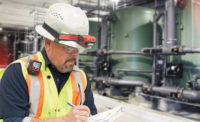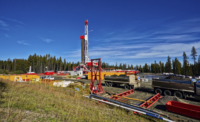Data from gas detectors
A whole new source of workplace intelligence

Are you safe enough?
Safety professionals and industrial hygienists have dedicated their careers to making work a safer place to be. This is a very noble and even glorious endeavor to say the least. After all, what could be more important than protecting and saving human lives?
There have been countless products and services developed over the years that are aimed at protecting workers from head to toe. The use of personal protective equipment (PPE) can stop falls, negate burns, monitor breathing air, decrease eye injuries and even prevent an accident before it happens. There have also been efforts to create safety awareness via machine guards, signage that points out potentially dangerous situations, and basic training that educates workers on the hazards specific to their workplace and how to protect themselves from them.
All of these things, and so much more, have undoubtedly led to safer workplaces. But is it enough? According to preliminary data from the Bureau of Labor Statistics, there were 4,609 fatal work-related injuries in 2011. Clearly, more needs to be done to keep workers safe and ensure that they go home to their families at the end of their shift.
Now, consider your safety program. Has it consistently had the impact that it’s intended to have, which is to keep your workplace free of incidents and workers free of injury? You might have had a few injuries within the last year, and that number might have even decreased from the year before; but how do you take your safety program to the next level in order to get to zero injuries and deaths?
Taking gas detection a step further
In the world of gas detection, technology has evolved over the past 20 years enough to monitor multiple hazardous gases in almost any given application in just about every industry. Other advancements include the availability of several interchangeable electrochemical sensors held within the instruments, ensuring you have the capability to monitor specifically for the potential hazards on your worksite; instrument alarms that are more visible and louder; lock-out tag-out procedures that ensure proper management of confined spaces and potentially dangerous areas; docking stations that can charge, calibrate and function “bump” test instruments; and more.
Today, docking stations can even download critical “site” data, but how can this data be used within your gas detection program to keep your workers safer? Some manufacturers can teach you how to view and read the data taken from your gas monitors, while others can provide basic knowledge of what the data means. In today’s gas detection market, there are solutions available that use the data from your gas detection program as a springboard for improvement. One cutting-edge advancement has evolved to take your program to an even higher level.
Imagine a program in which your gas detector fleet and data from it is managed for you. When a unit is malfunctioning, a sensor is losing life or calibration gas is running low, gas detection as a service ensures that these things are taken care of for you. For example, if your calibration gas is in fact running low, the software-based service uncovers this and triggers a new liter to be sent to you before you are out of calibration gas and unable to maintain your instruments in the way that they should be maintained. In this way, you can be sure that your workers will always be equipped with well-maintained, reliable equipment. Additionally, your operations are made more efficient, leading to cost savings.
You might even take it a step further and ask why a sensor lost its life in the first place or how the calibration gas liter emptied so quickly. You might wonder if there is a usage problem or if your calibration procedures should be revised to ensure proper calibration and bump testing of your instruments while using just the right amount of gas. Fortunately, the answer to all of these questions can be found within your program’s data.
Gas detection as a service can monitor your entire program and provide valuable information about your fleet. When using a service like this, here are just a few of the things that you can be notified of via email:
… Instruments which are not docked
… When an instrument has alarmed beyond its peak alarm set-point
… When an instrument has not been properly bump tested or calibrated
… When an instrument has been turned off in high alarm
… When a sensor experiences low sensitivity
… When calibration gas is low
In addition to the monitoring of the fleet itself, a program like this takes your data and provides visibility via an online dashboard into your instrument alarms, exposure and usage. Some might say that they cannot afford to pass up a service that does all of this, solving for common gas detection problems related to the maintenance of gas detector fleets and lack of visibility into instrument alarms. It is time to ask yourself, once again, how well you know your gas detection program, and ultimately, would you bet your life on it?
Looking for a reprint of this article?
From high-res PDFs to custom plaques, order your copy today!






